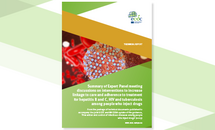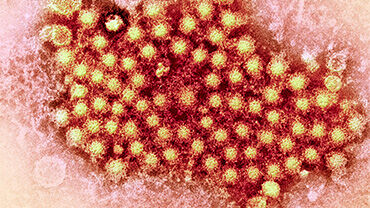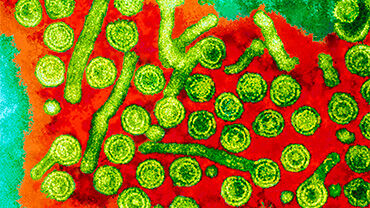Models of good practice for community-based testing, linkage to care and adherence to treatment for hepatitis B and C, HIV, and tuberculosis and for health promotion interventions to prevent infections among people who inject drugs
This collection of models of good practice of interventions to improve community-based testing, increase linkage to care and adherence to treatment for hepatitis B and C, HIV and tuberculosis and for health promotion interventions to prevent infections among people who inject drugs was conducted as part of the update of the joint European Centre for Disease Prevention and Control (ECDC) and European Monitoring Centre for Drugs and Drug Addiction (EMCDDA) guidance, ‘Prevention and control of infectious diseases among people who inject drugs’ (published in 2011). The purpose of this collection is to identify practice-based evidence for interventions with a documented impact implemented in real-life settings.
This document is part of the package of technical documents published to accompany the joint 2023 ECDC and EMCDDA update of the guidance ‘Prevention and control of infectious diseases among people who inject drugs.’ Other documents in this package can be found at the bottom of this page.
Executive summary
Methods
Within this collection, good practice is defined as an intervention or a package of interventions that has shown evidence of effectiveness in particular settings and is likely to be replicable in other situations.
A call for models of good practice was launched by ECDC and EMCDDA on 2 September 2020. A two-phase process (a call for expression of interest followed by the submission of models of practice using a structured online reporting form) was used, administered by the Austrian National Public Health Institute (Gesundheit Österreich, GOEG), and rolled out from September to November 2020.
A detailed reporting form has been developed for each of the four fields of intervention, including general information on the overall project, descriptive information on the intervention, data on sustainability, and evidence of the impact. Geographical coverage included the European Union (EU), the European Economic Area (EEA), the United Kingdom (UK), the European Neighbouring Policy (ENP) area, and the Western Balkans.
An assessment form was developed to standardise the selection process, based on a set of quality criteria adopted from the European Commission’s Steering Group on Promotion and Prevention (SGPP) document [1]. This set of criteria included:
- inclusion criteria to assess the adequacy/relevance of the intervention to the overall aim of the call;
- core criteria to consider whether the intervention was successful;
- qualifier criteria to assess whether the model of practice contains elements that are relevant for other settings, ensure sustainability, etc; and
- specifier criteria to allow categorisation by settings or sub-populations (no impact on the assessment of the relevance of an intervention).
The selection process of submitted interventions followed a two-phase process. In the first phase, an internal pre-assessment was conducted by GOEG focusing on inclusion and core criteria. In the event of any missing or unclear information, follow-up input was requested from the submitting authors. Submissions meeting the inclusion and core criteria were presented to the Expert Panel. Experts were invited to assess the qualifier criteria for four submissions by scoring transferability, sustainability, participation, and inter-sectoral collaboration. The score for each criterium was between 0 (not applicable) and 5 (fully applicable). To qualify as a model of good practice, a total score of 12 out of a maximum of 20 had to be reached.
Results
In the first phase of the call, 31 institutions from 16 countries expressed interest. In the second phase, 23 models of practice were submitted, using an online reporting form: seven submissions covered interventions to improve community-based testing, nine addressed interventions to increase linkage to care, five addressed interventions to increase adherence to treatment, and two submissions referred to health promotion interventions to prevent infections among people who inject drugs. Following the pre-assessment phase, 19 submissions qualified for expert panel review. Seventeen of the 19 submissions were selected as models of good practice. The 17 interventions were implemented under 12 different project/framework programmes in Austria, Belarus, Italy, Norway, Portugal, the Republic of Moldova, Spain, the UK, and one cross-national project carried out in Ireland, Romania, Spain, and the UK. Most of these projects addressed hepatitis C (10) as well as HIV (7), with HBV covered in four projects and TB in three projects. Nearly all projects addressed more than one infection. Those covering only one infection focused solely on the HCV care cascade.
Among the 12 projects/programmes from which the models of practice emerged, seven integrated a peer involvement approach to either enhance community-based testing (e.g. outreach peer support, peer-to-peer recruiting, involvement in point-of-care testing) and/or to increase linkage to care (e.g. peer navigators supporting referrals, outreach tracing of those not in care) and/or to increase adherence to treatment (e.g. keep regular contact during treatment). Another approach that was often used (5/12) was the integration of nurses in the treatment cascade. In addition, more than half of the projects used a multidisciplinary approach and put effort into the cooperation between drug services and specialised healthcare services, often using a low- threshold approach, in particular to increase linkage to care. A synopsis of the 12 models of practice by type of intervention, settings, and people who inject drugs subpopulation is presented in Annex 1.
Conclusions
This collection of models of good practice describes interventions and approaches currently being used successfully by European countries to address the care cascade of infections among people who inject drugs. The submitted models of good practice indicate a scarce availability of good quality data to measure practice- based evidence. It also illustrates the large amount of preparatory and supporting work (e.g. preparedness of care environment and of clients) that is needed to quantify the effectiveness of interventions. This is of particular relevance in hard-to-reach populations such as people who inject drugs.
The models of good practice presented here highlight the need for the programmes to be adjustable and adapt their approaches to national legal frameworks to existing healthcare and drug services and to the particular needs of the people who inject drugs populations aimed at being reached. Factors such as peer involvement, trust, and convenience to patients, community or low-threshold approaches covering a broad spectrum of patient needs can be seen as successful approaches. Systematically assessing the effects of such interventions warrants more attention in a future research agenda.







